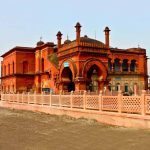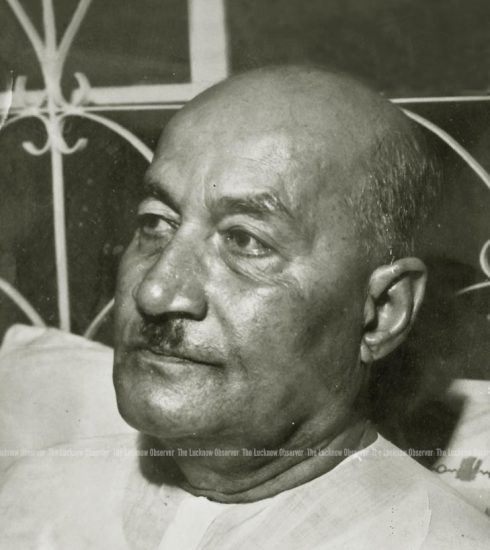Khwaja Haider Ali Aatish
The Epitome of Poetic Finesse in Urdu
Khwaja Haider Ali Aatish Lakhnawi was one of the geniuses of Urdu poetry in Lucknow whose literary rivalry with Imam Baksh Nasikh turned out to be some unparalleled lyrical gems. Aatish was born in 1778 in Mughal Pura, Faizabad and it is believed that his ancestors belonged to Baghdad and had migrated to Delhi and then to Faizabad, the then capital of Awadh during Nawab Shuja-ud-Daula’s time. In his early childhood he lost his father which denied him the opportunity of being in a regular school life. But the unfathomable, inborn taste for poetry provided him the access to the court of Nawab Mohammed Taqi Khan Taraqqi who took him to Lucknow in turn at the age of 29, in 1806. He initially composed his poetry with the pen name of ‘Maulaai’.
Aatish pursued his passion for poetry under the guidance of Mushafi who was an important poet then of the Lucknow school and adopted his new pen name ‘Aatish’. On the grounds of his poetic abilities, Aatish soon founded his repute in literary groups and became a top-ranking poet of Lucknow and also became a worthy rival of Nasikh. It was Nasikh who stood tall for purposes of poetic comparison with Aatish as both of them were acknowledged as the masters in the field of Urdu Poetry. Despite of being poetic rivals Aatish and Nasikh were good friends and both of them represented the Lucknow school. They respected each other and that is why Aatish stopped writing poetry after the death of Nasikh.
Aatish chose to lead an independent life without any employment or state benefaction. His literary work had an independent approach and concern for the dignity of man and human interest. Accentuating on the form and phrasing, correctness of idiom and exact execution of the rules of prosody in the literary work of Aatish distinguished the central feature of the poetic identity of his period. Self-pity and melancholy can’t be seen anywhere in his poetry. All of his Ghazals were recited in a challenging tone that made him the most prominent Ghazal writer of protest Poetry in a feudal age and some critics even ranked him after Mirza and Ghalib.
His ghazals are built round the traditional themes of love and mysticism, and his sentiment is noble and refined. He writes familiar, speech-like language, and his words are carefully chosen and artistically arranged. He also makes an apt use of he contemporary idiom, so that some of his lines, like the lowing, have become popular quotations.
Renowned for ghazals with a mystic flavour, Aatish’s work displays a unique sensuous quality. He seldom loses spontaneity. Quite often he displays a tendency for ornamentation and word based poetry but we also have in him a representative lyricist of the age. He died on 12th January 1846 in Lucknow and was buried in his own house at Chadhai Madho Lal. One of his most famous couplet is as :
Taar taar pairahan hain bhar gayi hai buu-e-dost
Misle tasweer nihaali mai huun ya pahlu-e-dost?
Hijr ki shab ho gayi roz-e-qayamat se daraaz
Dosh se neeche nahin utre abhi gesu-e-dost
Daagh-e-dil par khair guzri to ghanimat jaaniye
Dushman-e-jaan hain jo aankhen dekhti hain soye dost
Farsh-e-gul bistar tha apna, khaak par sote hain ab
Khisht zer-e-sar nahin yaa takia tha zaanu-e-dost
Yaad karke apni barbaadi ko rote hain hum
Jab udaati hain hawaaein tund khaak-e-koo-e-dost
Is balay-e-jaal se Aatish dekhiye kyunkar nibhe
Dil siwa sheeshe se nazuk, dil se nazuk khoo-e-dost
Akansha
Writer is a student, an aspiring painter & calligrapher
(Published in The Lucknow Observer, Volume 2 Issue 18, Dated 05 September 2015)








